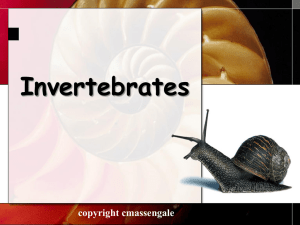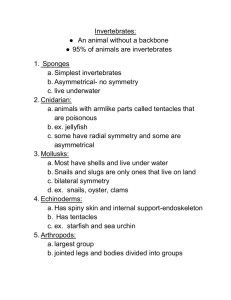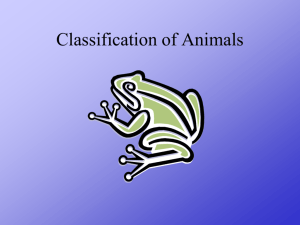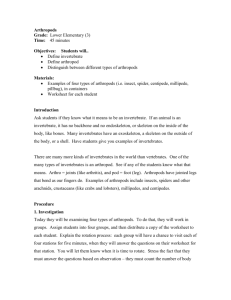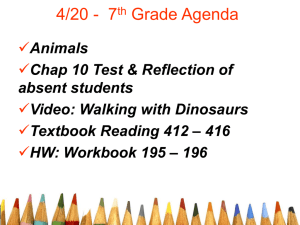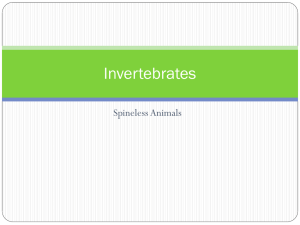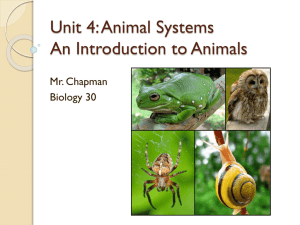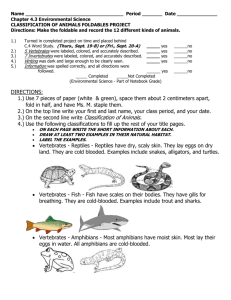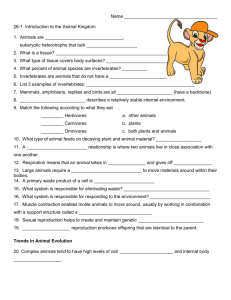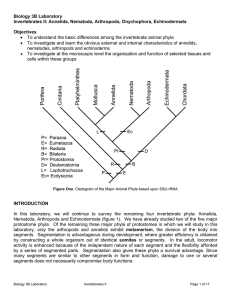Invertebrates
advertisement
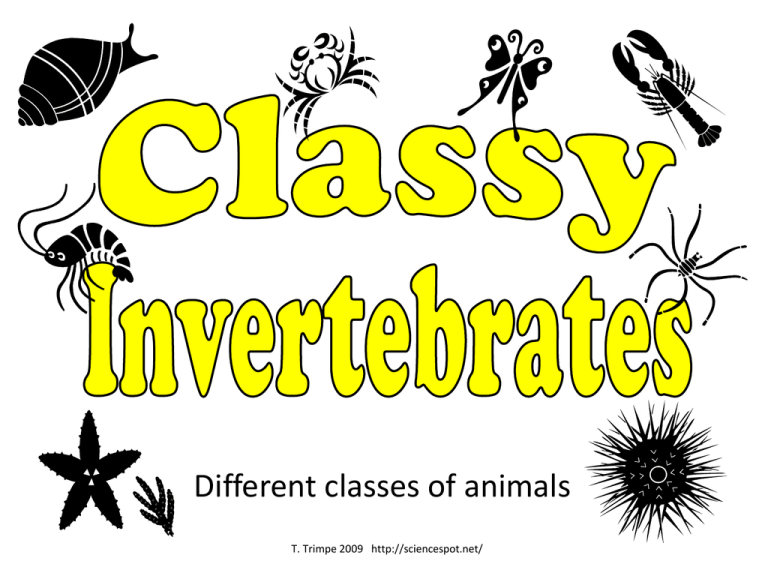
Different classes of animals T. Trimpe 2009 http://sciencespot.net/ Sub-phylum Invertebrates Invertebrates are animals that do not have backbones. 97 % of the animal kingdom is made up of invertebrates. Some can be found in ponds, oceans, and other water environments. Insects and some other invertebrates have exoskeletons. There are 6 groups of invertebrates Porifera: Sponges They look like plants but they are animals. Sponges stay fixed in one place (sessile). Their bodies are full of holes and their skeleton is made of spiky fibers. Water flows through the holes of their body which enables them to catch food (filter feeders). adapted from http://gideon.k12.mo.us/teachers/jswilley/ht Cnidarians: Corals, Hydras, and Jellyfish Corals look like plants but have soft tubelike bodies with a single opening surrounded by armlike parts called tentacles used to catch food Hydras move from place to place and use tentacles that catch their food. Jellyfish catch shrimp, fish, and other animals in its tentacles also. Worms: Flatworms, Roundworms, and Segmented worms Worms are tube-shaped invertebrates which allows them to be put into groups. They can be found in both land and water environments. Platyhelminthes: Flatworms • They have a head and a tail, and flattened bodies. Roundworm • They have rounded bodies. • They live in damp places and they can also live inside humans and other animals. Segmented worms • The earthworm belongs to this group of worms. • Their bodies are divided in segments, or sections. • They prefer burrowing through moist soil. • This allows them to move easily and it keeps them from drying out. Echinoderms: Sea Stars, Sea cucumbers and Sea Urchins A group of invertebrates that have tiny tube feet and body parts arranged around a central area. Molluscs A mollusc usually has a hard shell, a rough tongue, and a muscular foot. A snail is a mollusc with a single hard shell. A clam has two shells joined together by a hinge. Squids and octopuses are also molluscs Their hard shells are small, but they are inside t heir bodies. Arthropods adapted from http://gideon.k12.mo.us/teachers/jswilley/ht Arthropod Characteristics • Arthropods are a group of invertebrates with jointed legs and hard exoskeleton that protect the arthropod. • As it grows, it molts, or sheds its old exoskeleton. • Then it grows a new exoskeleton that allows its body to continue to grow. • A lobster is an arthropod. • The largest group of arthropods are insects. adapted from http://gideon.k12.mo.us/teachers/jswilley/ht Arthropods: Insects, Spiders, and Centipedes/Millipedes • They are the only invertebrates that can fly. • Insects have bodies divided into three parts, and six legs. • Spiders have jointed legs (eight legs), jaws and fangs. • Centipedes and millipedes are also arthropods. • Centipedes uses its many legs to run from enemies. • Millipedes roll up their bodies when they sense danger approaching. adapted from http://gideon.k12.mo.us/teachers/jswilley/ht
